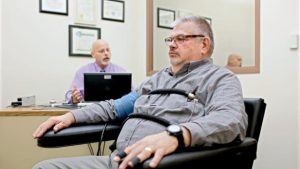
Unveiling the Truth: The Intricacies of Lie Detector Tests

In a world where truth holds the key to integrity and justice, the concept of lie detection has always captivated our imagination. Lie detector tests, also known as polygraphs, have been a symbol of our quest for uncovering deception. Developed as a tool to gauge the veracity of individuals’ statements, this technology has been the subject of fascination and controversy for decades. The intricate mechanisms behind lie detector tests continue to beguile both skeptics and believers, prompting a deeper exploration into the complexities of human deception.
History of Lie Detector Tests
Lie detector tests, also known as polygraph tests, have a fascinating history that dates back to the early 20th century. The origins of modern lie detection can be traced to the work of William Moulton Marston, a psychologist who invented the systolic blood pressure test in 1915. This test measured changes in blood pressure to determine if a person was lying.
Over the years, the methodology of lie detector tests evolved and new technologies were incorporated to enhance accuracy. In the 1920s, John Augustus Larson, a police officer and physiologist, developed the modern polygraph instrument that measured multiple physiological responses simultaneously. This advancement marked a significant milestone in the history of lie detection.
Throughout the 20th century, lie detector tests gained popularity and were used in various settings such as law enforcement, government agencies, and employment screenings. Despite ongoing debates about their reliability and validity, lie detector tests remain a widely used tool in uncovering deception.
How Lie Detector Tests Work
Lie detector tests, also known as polygraph examinations, are widely used to uncover deception in various settings including investigations and screenings. These tests operate on the principle that changes in physiological responses can indicate when someone is being deceptive. During a typical lie detector test, the individual is connected to sensors that record physiological indicators such as heart rate, blood pressure, respiration, and skin conductivity.
Polygraph
These physiological responses are monitored by the examiner while a series of questions are asked to the individual being tested. The questions usually include control questions, relevant questions, and irrelevant questions. Control questions are used for baseline comparison, while relevant questions pertain to the specific issue being investigated. Irrelevant questions serve as buffers to help establish a pattern of behavior for the examinee. The examiner then analyzes the data collected during the test to determine if there are significant changes in physiological responses that correlate with deceptive behavior.
While lie detector tests can provide valuable insights into potential deception, it is essential to note that they are not foolproof and can be influenced by various factors such as the examinee’s emotional state, physical condition, and the experience of the examiner administering the test. Despite their limitations, lie detector tests remain a widely-used tool in uncovering deception and have proven useful in certain investigative and security situations.
Limitations and Controversies
Lie detector tests have faced a fair share of criticisms due to their limitations. One major concern is the issue of false positives and false negatives. These inaccuracies can occur when the test is influenced by factors such as the examinee’s emotional state, health conditions, or even the skill of the examiner conducting the test.
Another controversy surrounding lie detector tests is the lack of standardized procedures and regulations. The variation in techniques used by different examiners and the absence of universal guidelines can lead to inconsistencies in results. This inconsistency raises doubts about the reliability and validity of the test as a measure of truthfulness.
Moreover, the reliance on physiological responses like heart rate and skin conductance to detect lies has been debated by experts. Critics argue that these physiological changes can be influenced by factors unrelated to deception, such as anxiety or stress. This raises concerns about the test’s ability to accurately differentiate between lies and truthful statements.

